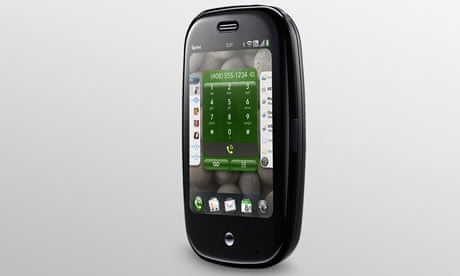It is one of the most eagerly awaited mobile phones of the year, the
closest anyone has come to rivalling - perhaps besting - the iPhone, and for its creator it is a last throw of the dice, a make or break handset, an attempt by the company that introduced us to the concept of a personal digital assistant - PDA - to recapture the glory days.
So with all that in mind, the question is: why on Earth did Palm choose to make the Pre available exclusively on O2 in the UK?
Most (not quite all) the problems with the Pre are to do with a network that seems to have slowed down dramatically in the last few weeks, and I speak as an O2 customer who - despite living and working at different ends of London's Zone 1 cannot get decent reception at home or in the office.
The network is as riddled with holes as Emmental, and I don't think in the week or so that I used the Pre it ever got five bars of wireless coverage.
But switch on the Wi-Fi and suddenly one of the Pre's big selling points - multi-tasking - leaps into life. Applications, from browser pages and downloadable apps such as Twitter client Tweed to email and the camera, appear as individual "cards" on the phone's screen that you can scroll through. It means you no longer have to stare at a blank screen while waiting for your email to update or a web page to load, you can go and do something else.
The processor only seemed to suffer significant lag when scrolling through photos and playing music at the same time.
Sticking music on the device involves plugging in a USB cable and dragging MPs files over to the device, given that Apple regularly cuts it out of iTunes. Migrating contacts was a doddle (something that can not be said of most smartphones) and it seamlessly merged phone contacts with Facebook.
The touchscreen is as good as the iPhone's - though it is smaller, so web pages are hard to read unless you switch to landscape mode -and the addition of ripples when an icon is touched helps navigation.
Palm has obviously taken some touch staples from Apple, such as zooming in by placing two fingers on the screen and moving them apart, but introduced some new variants such as a "gesture" zone at the bottom of the screen. This means that swiping from the small button at the bottom of the device to the left acts as a back button, while swiping the whole length in either direction moves between apps.
The Palm store, by the way, is easy to navigate, but sparsely populated.
For a phone with a slide-out qwerty keyboard, the Pre is still surprisingly thin and light, but despite its polished black look it feels a bit plasticky when the keyboard is out. Incidentally the bottom ridge of the keyboard is weirdly sharp for a phone that is supposed to resemble a polished pebble.
I know Americans love physical keyboards, but I can't help feeling the Pre would be better without it. I have never had issues with writing emails, texts or even newspaper copy with the onscreen keyboard on
the iPhone.
As with so many smartphones (including the iPhone) however, the Pre falls down when it is actually used for its basic purpose - making calls. The sound quality is poor - the person called sounds like they are stuck in a dustbin full of duvets - and reception is patchy, though again that may all be O2's fault. Perhaps they are giving all their network capacity to the iPhone. If so, that is a terrible disservice to the Pre, which - of all the touchscreen devices to follow Apple's lead - is by far the best.
Pros: Multi-tasking; great touchscreen
Cons: Under-stocked app store will have you looking in envy at iTunes; It's only available on O2's network at the moment

Comments (…)
Sign in or create your Guardian account to join the discussion